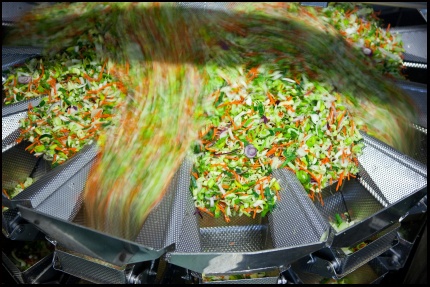For food manufacturers, quality is extremely important to their consumer, which is why it is so important to ensure that all of the quality standards are met. This is not only to appease consumer needs and demands, but also to demonstrate to board members, suppliers, regulatory agencies, and various others that their product is worthwhile and is indeed meeting quality standards.  With the threat of recalls, bacterial intrusions, and all sorts of other potential issues, how does a food manufacturer effectively measure quality and understand their quality metrics? This is where certain tools may be utilized and are useful in the sense that they offer proof of quality performance. While these tools may vary from company to company, there are a few essential ones that can provide thorough insight into the operation and aid in ensuring quality.
With the threat of recalls, bacterial intrusions, and all sorts of other potential issues, how does a food manufacturer effectively measure quality and understand their quality metrics? This is where certain tools may be utilized and are useful in the sense that they offer proof of quality performance. While these tools may vary from company to company, there are a few essential ones that can provide thorough insight into the operation and aid in ensuring quality.
Quality Metrics in Food Production
The tools utilized in analyzing quality metrics in food production include the following:
- Control Charts - Also known as Shewhart charts, these charts demonstrate predictability of a process by plotting and charting data. These charts indicate stability within production. An example of this would be packages of candy having normal distribution in the amount of pieces per package. Any data that falls outside of the control limits will signal an issues that needs to be addressed in order to effectively maintain consistency.
- Capability Analysis - This tool pertains to calculations that are used to assess whether a system will be able to meet certain specifications or not. This statistical tool will further eliminate any headaches pertaining to when processes fail to meet any unrealistic expectations.
- Statistical Process Control - Statistical Process Control is used to analyze and interpret data in order for any improvements to become apparent. This process may involve collecting data on any fill rates in food packaging or any potential incidents of food-borne pathogens within production. Any process can be measured and improved.
A software that can adequately measure these metrics within food production includes PlanetTogether’s advanced planning and scheduling software. Advanced Planning and Scheduling Software (APS) allows you and your manufacturing operation to have thorough insight into your operation and can effectively boost efficiency among production.
Advanced Planning and Scheduling Software
Advanced Planning and Scheduling (APS) software has become a must for modern-day manufacturing operations due to customer demand for increased product mix and fast delivery combined with downward cost pressures. APS can be quickly integrated with a ERP/MRP software to fill gaps where these system lack planning and scheduling flexibility and accuracy. Advanced Planning and Scheduling (APS) helps planners save time while providing greater agility in updating ever-changing priorities, production schedules, and inventory plans.
- Create optimized schedules balancing production efficiency and delivery performance
- Maximize output on bottleneck resources to increase revenue
- Synchronize supply with demand to reduce inventories
- Provide company-wide visibility to capacity
- Enable scenario data-driven decision making
Related What If Video
APS Resources
Topics: Advanced Planning and Scheduling




















LEAVE A COMMENT